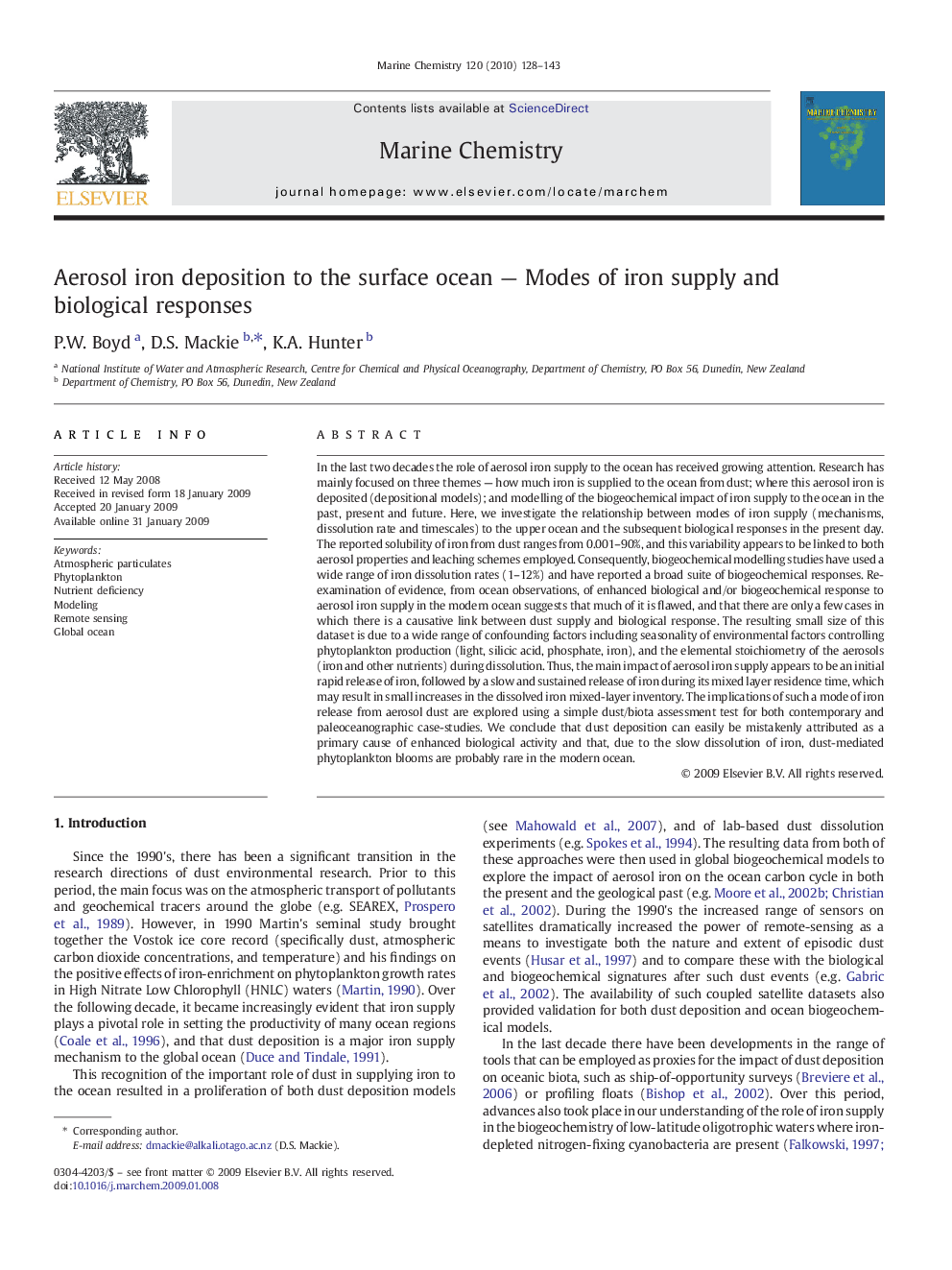| کد مقاله | کد نشریه | سال انتشار | مقاله انگلیسی | نسخه تمام متن |
|---|---|---|---|---|
| 1261662 | 1496704 | 2010 | 16 صفحه PDF | دانلود رایگان |

In the last two decades the role of aerosol iron supply to the ocean has received growing attention. Research has mainly focused on three themes — how much iron is supplied to the ocean from dust; where this aerosol iron is deposited (depositional models); and modelling of the biogeochemical impact of iron supply to the ocean in the past, present and future. Here, we investigate the relationship between modes of iron supply (mechanisms, dissolution rate and timescales) to the upper ocean and the subsequent biological responses in the present day. The reported solubility of iron from dust ranges from 0.001–90%, and this variability appears to be linked to both aerosol properties and leaching schemes employed. Consequently, biogeochemical modelling studies have used a wide range of iron dissolution rates (1–12%) and have reported a broad suite of biogeochemical responses. Re-examination of evidence, from ocean observations, of enhanced biological and/or biogeochemical response to aerosol iron supply in the modern ocean suggests that much of it is flawed, and that there are only a few cases in which there is a causative link between dust supply and biological response. The resulting small size of this dataset is due to a wide range of confounding factors including seasonality of environmental factors controlling phytoplankton production (light, silicic acid, phosphate, iron), and the elemental stoichiometry of the aerosols (iron and other nutrients) during dissolution. Thus, the main impact of aerosol iron supply appears to be an initial rapid release of iron, followed by a slow and sustained release of iron during its mixed layer residence time, which may result in small increases in the dissolved iron mixed-layer inventory. The implications of such a mode of iron release from aerosol dust are explored using a simple dust/biota assessment test for both contemporary and paleoceanographic case-studies. We conclude that dust deposition can easily be mistakenly attributed as a primary cause of enhanced biological activity and that, due to the slow dissolution of iron, dust-mediated phytoplankton blooms are probably rare in the modern ocean.
Journal: Marine Chemistry - Volume 120, Issues 1–4, 20 June 2010, Pages 128–143